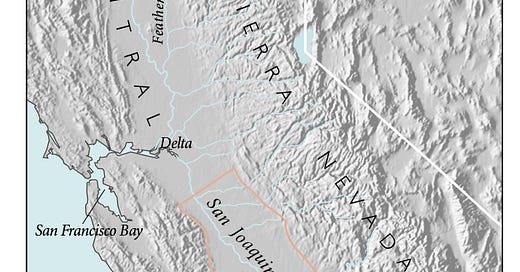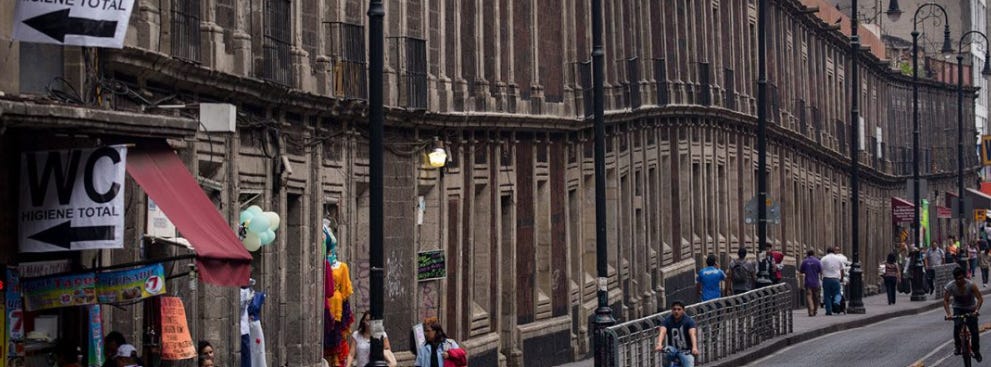The importance of groundwater as a freshwater resource cannot be understated. Many communities rely heavily on wells that tap into aquifers beneath the ground we walk on. These wells pump groundwater to the ground surface where it is used for drinking water, agriculture and countless other activities.
Pumping groundwater, however, is not without consequence. Groundwater resources are not infinite. If groundwater is pumped at a rate that exceeds the rate of recharge, the groundwater resource will be depleted. Places like Kitchener-Waterloo and Guelph have studied their aquifers for years in order to understand what volumes of groundwater can safely be removed. This information is an important part of future growth plans of these cities.
But there’s another side-effect of groundwater pumping. Groundwater is naturally pressurized. Think about jumping into a deep lake - as you swim deeper, your ears feel the change in water pressure. The water pressure increases as the depth of water increases.
Groundwater behaves like a lake in this sense. Wells that are drilled into the ground tap into aquifers that are pressurized1. When groundwater is pumped from the well, the pressure in the aquifer is reduced. Since groundwater flows from high pressure to low pressure, the pressure drop caused by pumping draws groundwater towards the well.
Depressurizing an aquifer by groundwater pumping can have side effects. If we start pumping and reducing pressure in an aquifer, the structure of the geologic materials can be altered2. Each geologic material behaves differently, but in some cases, the change in structure can result in compaction. When geologic materials compact, the land can sink. This is known as land subsidence3.
There are many case studies around the world where land subsidence has been occurring4. The San Joaquin Valley in California is an area where land subsidence has occurred over many decades. Groundwater has been pumped in this valley since the early 1900s and the United States Geological Survey has reported up to 28 feet of land subsidence.
The San Joaquin Valley lies between the Sierra Nevada mountains to the east an the Diablo Range to the west. The valley produces approximately 11 percent of the United States’ agricultural value. If you buy fruit or vegetables from California, there’s a good chance they were grown in this valley

Below, two schematics (click here for reference) show conditions before and after development in the San Joaquin Valley. Prior to pumping, groundwater entered the valley from the surrounding mountains. Groundwater in the valley flowed upwards (note the faint blue arrows, which indicate the direction of groundwater flow) to streams or was lost to evaporation and plant uptake (transpiration). Once pumping started (second image), groundwater began to flow downward to the pumping wells. The decrease in pressure caused by pumping has resulted in land subsidence. The subsidence area (labelled in the second figure) indicates where land subsidence has been occuring, primarily due to the compaction of the Corcoran clay unit from groundwater pumping.
A second example is Mexico City, in the Valley of Mexico, which used to contain many lakes. As the city grew over centuries, lakes were drained and groundwater was used as a water source. As the population grew (to over 20 million!), the demand for water increased and more groundwater has been pumped out of the ground. This has resulted in land subsidence throughout the valley.
This diagram shows the areas of land subsidence as well as rates at which the land has been sinking (click here for reference. Note this link might be behind a paywall. You can also find this image here).
Another reference estimates that land subsidence in and around Mexico City can be up to 50 centimetres (20 inches) per year.
This animation below shows a simplified representation of how groundwater pumping has lowered the water table and resulted in and subsidence in Mexico City (click here for reference). As the water table drops due to groundwater pumping, the clay units compact. This results in land subsidence, which in this case, has affected the buildings.
This next photo shows how buildings are affected (click here for reference).
These two examples (San Joaquin Valley in California and Mexico City) have some similarities. Both locations are in valleys where lakes once existed. Lake beds typically contain clay materials, which are more susceptible to compaction5.
Land subsidence in other environments can be even more catastrophic. In coastal cities (New Orleans, Venice…), land subsidence combined with sea-level rise can result in flooding. An understanding of groundwater systems an geology is critical when cities grow. There are countless examples where our lack of understanding has led to the issues we see today. As the demand for water increases with population, it is important that we continue to study the potential side effects of our water use. Groundwater is an important water resource that we need to understand and protect.
The pressure in groundwater is a function of depth, much like water pressure in a swimming pool. However, with groundwater, other variables play a role, such as the type of geologic material and the location and magnitude of groundwater recharge.
Materials like certain clays can compact more than others. Clay particles are tiny and can be flat, with a structure like a house of cards. Depressurizing this type of clay can cause the house of cards to collapse (i.e., compaction). Other materials, like beach sands, will compact much less.
Groundwater pumping is just one cause of land subsidence. Other contributing factors could be the mass of buildings, compaction of organic material (such as peat), underground mining, oil and gas extraction.
A couple of popular Canadian songs include Venice is Sinking (by Spirit of the West) and New Orleans is Sinking (by the Tragically Hip). Both of these cities are actually sinking!
Not all clays are as susceptible to compaction as these examples. In southern Ontario, communities like Kitchener-Waterloo rely heavily on groundwater pumping. This area contains clay materials. However, in this case, the clays are “over-consolidated” due to the periods of glaciation (thousands of years ago) where glaciers as thick as 1 to 2 km overlied the land we live on. The mass of these glaciers compressed the geologic materials to the point where they’re less prone to compaction due to groundwater pumping.








Would that be the reason for the ' sink-holes' in parts of Florida as well?
Thank you for this Blog.
Helen Wills
Hi Helen. It's similar to Florida. The geologic materials in Florida include carbonate rocks, such as limestone. Over time, water flowing through these rocks can dissolve the rock, resulting in large cavities (in Mexico, these are called "cenotes"). The cavities (also know as karst) can be deep underground, and they can collapse under certain conditions. When they collapse, the ground above can sink!